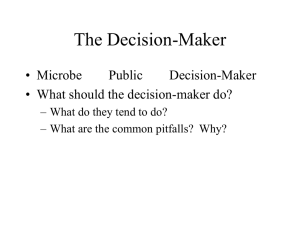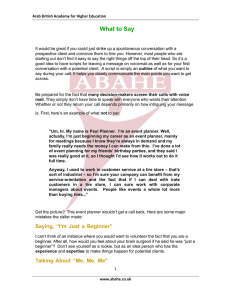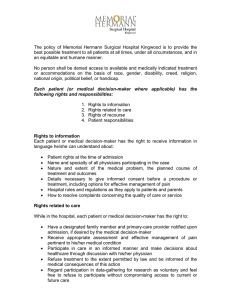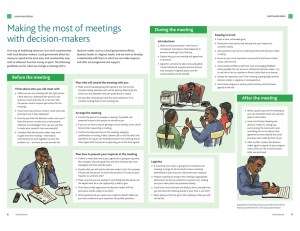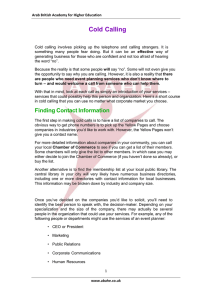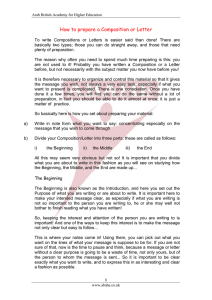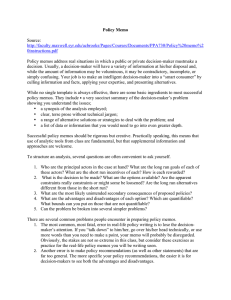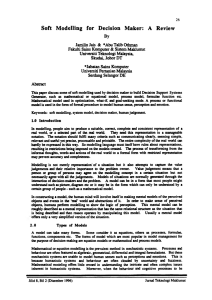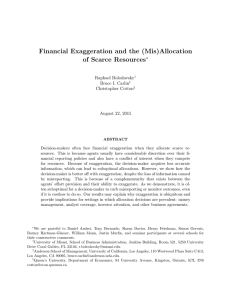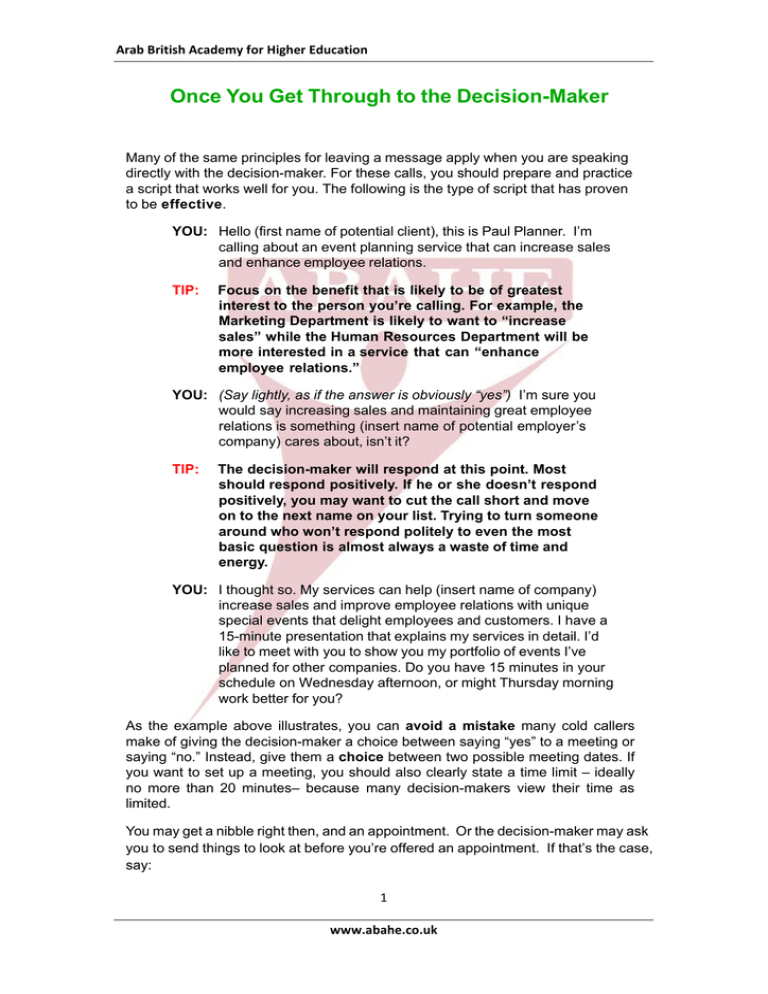
Arab British Academy for Higher Education Once You Get Through to the Decision-Maker
Many of the same principles for leaving a message apply when you are speaking
directly with the decision-maker. For these calls, you should prepare and practice
a script that works well for you. The following is the type of script that has proven
to be effective.
YOU: Hello (first name of potential client), this is Paul Planner. I’m
calling about an event planning service that can increase sales
and enhance employee relations.
TIP:
Focus on the benefit that is likely to be of greatest
interest to the person you’re calling. For example, the
Marketing Department is likely to want to “increase
sales” while the Human Resources Department will be
more interested in a service that can “enhance
employee relations.”
YOU: (Say lightly, as if the answer is obviously “yes”) I’m sure you
would say increasing sales and maintaining great employee
relations is something (insert name of potential employer’s
company) cares about, isn’t it?
TIP:
The decision-maker will respond at this point. Most
should respond positively. If he or she doesn’t respond
positively, you may want to cut the call short and move
on to the next name on your list. Trying to turn someone
around who won’t respond politely to even the most
basic question is almost always a waste of time and
energy.
YOU: I thought so. My services can help (insert name of company)
increase sales and improve employee relations with unique
special events that delight employees and customers. I have a
15-minute presentation that explains my services in detail. I’d
like to meet with you to show you my portfolio of events I’ve
planned for other companies. Do you have 15 minutes in your
schedule on Wednesday afternoon, or might Thursday morning
work better for you?
As the example above illustrates, you can avoid a mistake many cold callers
make of giving the decision-maker a choice between saying “yes” to a meeting or
saying “no.” Instead, give them a choice between two possible meeting dates. If
you want to set up a meeting, you should also clearly state a time limit – ideally
no more than 20 minutes– because many decision-makers view their time as
limited.
You may get a nibble right then, and an appointment. Or the decision-maker may ask
you to send things to look at before you’re offered an appointment. If that’s the case,
say:
1 www.abahe.co.uk Arab British Academy for Higher Education “I’ll be happy to do that. If you can switch me back to your
assistant, I’ll make sure I have the proper mailing
information. And if I may, I’ll just touch base with you
around the middle of next week. Thanks so much, Mr.
McOrder.”
However, instead of getting an appointment or an invitation to send something,
don’t be surprised to get at least a mild objection. An excellent way to respond is
to agree with how the decision-maker feels and explain that many other people
felt exactly the same way until they had a chance to learn more about your
program.
CLIENT: We don’t have a need for this type of service right now.
YOU:
I understand how you feel. Many of my clients felt exactly the
same way until I was able to show them how they could benefit
from this service. I’d like to show you the same thing. Would
Wednesday afternoon work for you, or would Thursday
morning be better?
Although you are not giving them any more information, the above statement can
be surprisingly effective in getting the client to agree to a meeting. Often the first
objection
is an automatic reaction, and just a little push can get you in the door. However, if
the client wants more information, you can certainly give them more. For
example,
CLIENT: We always want to save some money and maintain good
client relations, but I’d have to know a little bit more about
what you’re selling to set up an appointment.
YOU:
I understand. In addition to planning memorable events that
can help you get more business from your clients, I can
show you how to improve employee productivity through
company events. Would Wednesday afternoon work for
you, or would Thursday morning be better?
If the decision-maker is still not interested, then move on to the next person on your
list. If you are overly aggressive, most decision-makers will be turned off and may
not want to do business with you. Your time could be better spent focusing on
people who are interested in what you have to offer.
Don’t worry if your first few calls don’t go as planned. Consider them practice.
Once you have been using this approach for a while, it should generate a
respectable success rate. Depending on what you are proposing, a good
success rate for setting up meetings may be one “yes” out of every ten calls or
even one “yes” out of every two calls. It is up to you to determine if making a lot
of cold calls is a good use of your time.
If this approach doesn’t work, go back and take a hard look at your script. Are you
clearly communicating the benefits of taking the action you suggest to the
decision- maker? If you believe you are, ask someone you respect to listen to you
2 www.abahe.co.uk Arab British Academy for Higher Education make some of your calls. They may discover something in the way you
communicate that could be improved.
All Rights Reserved © Arab British Academy for Higher Education
3 www.abahe.co.uk

